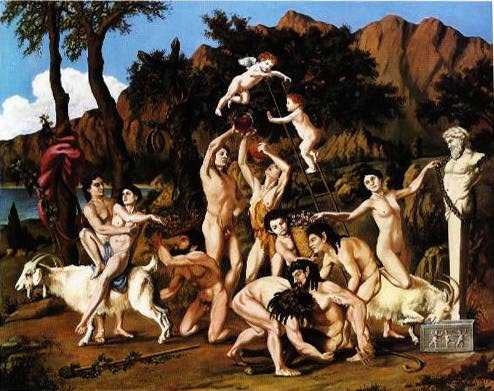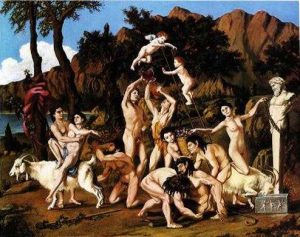A few years ago, NPR offered up an investigation into the roots of St. Valentine’s Day. It begins:
“Valentine’s Day is a time to celebrate romance and love and kissy-face fealty. But the origins of this festival of candy and cupids are actually dark, bloody — and a bit muddled.
“From Feb. 13 to 15, the Romans celebrated the feast of Lupercalia. The men sacrificed a goat and a dog, then whipped women with the hides of the animals they had just slain.
“The Roman romantics ‘were drunk. They were naked,’ says Noel Lenski, a historian at the University of Colorado at Boulder. Young women would actually line up for the men to hit them, Lenski says. They believed this would make them fertile.
“The brutal fete included a matchmaking lottery, in which young men drew the names of women from a jar. The couple would then be, um, coupled up for the duration of the festival — or longer, if the match was right.
“The ancient Romans may also be responsible for the name of our modern day of love. Emperor Claudius II executed two men — both named Valentine — on Feb. 14 of different years in the 3rd century A.D. Their martyrdom was honored by the Catholic Church with the celebration of St. Valentine’s Day.”
http://www.npr.org/2011/02/14/133693152/the-dark-origins-of-valentines-day.
Now some folks, not just us, might be struck by the resemblance of these festivities and those celebrating Bou Jeloud, a deity that William Burroughs referred to as the “Moroccan Pan,” the rite being accompanied by the playing of the Master Musicians of Jajouka. Jajouka.com explains:
“This music is, in its essence, part of a fertility ritual, a variant of which has existed for millennia but which is perhaps best preserved in Jajouka. Similar traditions are found throughout the Mediterranean lands where masked and frantic characters, at certain times of the year, spread panic and fear amongst the villages. Some theories (notably those of the 19th–century anthropologist, Edward Westermarck) point to the similarities of these traditions and the Roman Lupercalia festival.
“In Jajouka the rites center on a character named Boujeloud, and the woman with whom he is enamored, Aisha Qandisha. An angry Boujeloud tries to strike the musicians and onlookers, but is controlled by the powerful force of the music, the Boujeloudia. Boujeloud holds branches in his hands, and in his frenzy he might hit anyone present. Women hit by him are sure to be fertile in the future. Aisha Qandisha dances and entices him.
“On the full moon after Aïd el–Kebir, the musicians hold a festival wherein this fabulous music is performed. It is characterized by a certain rhythm and melody, and can be performed by many ensembles using differing instruments such as Ghaita and Tebel, Lira and even Gimbri and Bendir. It can be performed also at other times, at marriages and parties. Everyone can dance it, but should look out for the man with a basket hat and goatskin. Boujeloud might come running out of nowhere and the dancer will only have time to see the bright fierce eyes before he has to run.”


